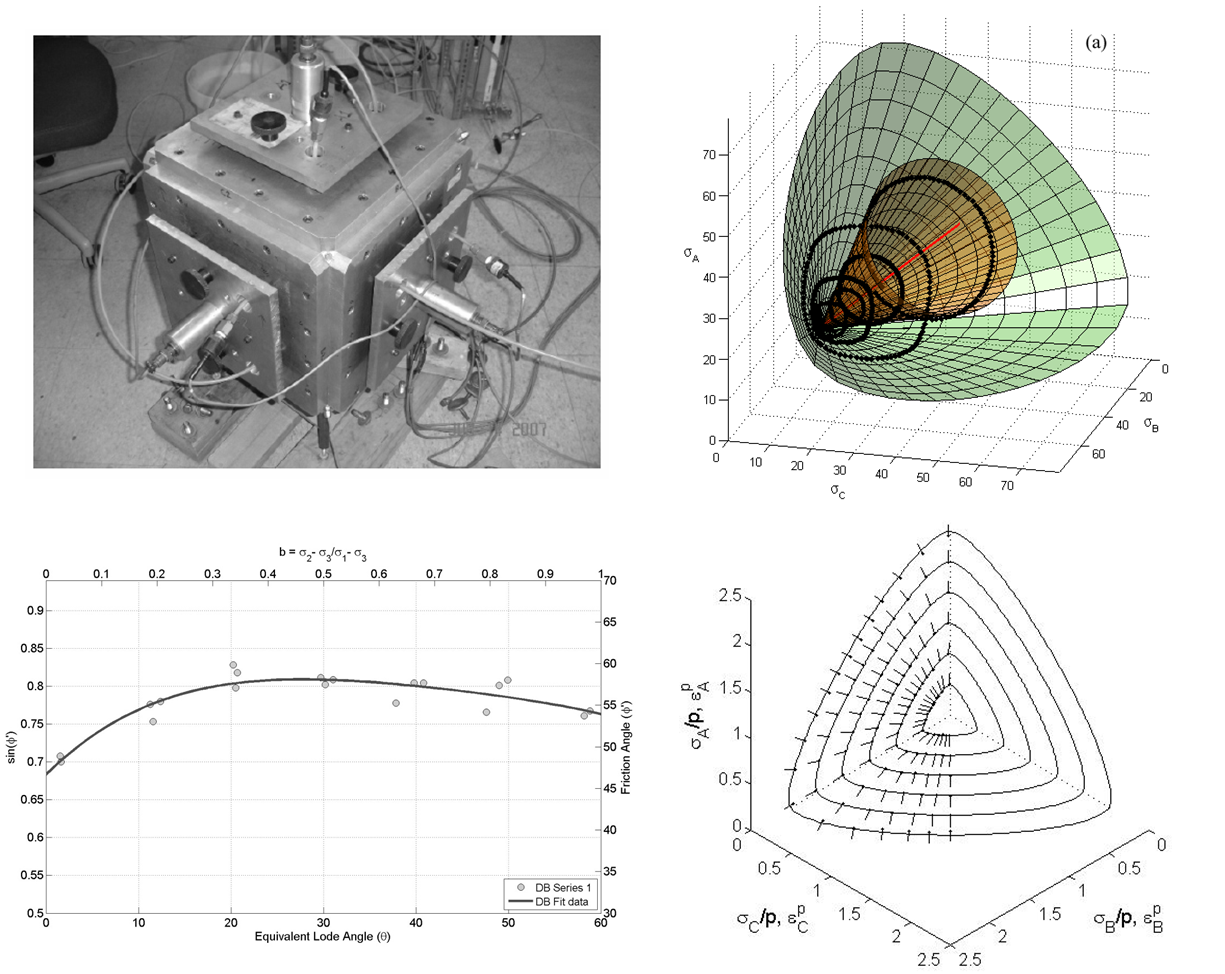Research
Experimental Study of Gravels using a Large Cubic Triaxial Device
Participants: Chang-Ho Choi, Michael Harney, Oliver Hoopes, Dana Biggerstaff, and Pedro Arduino
In geotechnical engineering the stress-strain/constitutive and strength characteristics of soils subjected to loading conditions similar to those encountered in the field are of particular interest. In principle, stress conditions are three dimensional. Thus, three-dimensional devices have been popular research tools. During the last four decades extensive research has been conducted on the development of multiaxial, or true triaxial, apparatus (TTA) that facilitate the characterization of soil behavior under three-dimensional stress conditions. Among them is a true triaxial apparatus capable of testing 241´241´241-mm cubical coarse-grained specimens developed at the University of Washington. The apparatus, referred to as the UW-TTA hereafter, was built using a flexible boundary design similar to that developed by Sture and Desai (1979).
The UW-TTA is believed to be the first true triaxial device of its kind developed with the ability to test large cubical coarse-grained specimens providing the means for testing specimens under a wide variety of drained and undrained monotonic and cyclic stress paths. The apparatus uses flexible boundaries to apply three independently controlled principal stresses with back pressure. These stresses are applied using a fully computer-controlled electro-pneumatic loading system with advanced technology for data control. Several verification testing results show the UW-TTA is capable of capturing the stress-strain characteristics of coarse-grained materials subjected to a wide variety of stress paths.

Contact
Pedro Arduino
132 I More Hall, Department of Civil & Environmental Engineering,
University of Washington, Seattle, WA, 98195-2700. Tel: 206-543-6777, e-mail: parduino@uw.edu